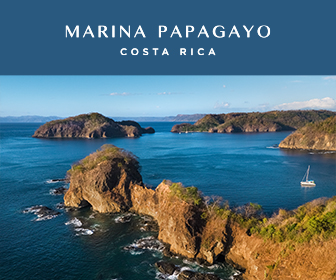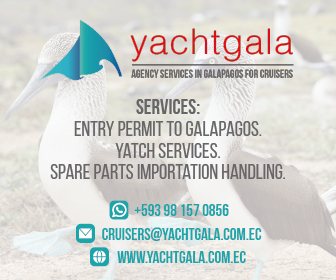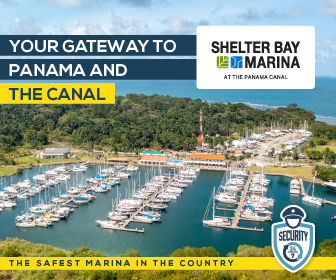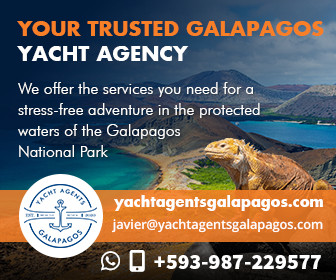Pacific Panama: Cruising Notes for the Darien Region
During November 2015 I travelled by my 32′ long 6′ draft sailboat Hildegard Hansen in the Darien. Having found little to no information on this area I would like to contribute with these notes to incentivize people to explore this area by boat or on foot.
Published 8 years ago, updated 5 years ago
NAVIGATION
I used the Bauhuas Guide and .kap charts. I found them well done and precious aids.
I kept my eyes wide open and in the right conditions, I brought my boat well into the uncharted areas.
I was coming from Las Perlas Islands and I decided to do a clockwise trip.
WEATHER
It was a Nino year. I encountered nice weather, with just sporadic showers and no torrential RAIN (except for one day of continuous rain).
Very little variable WIND meant I had to use the engine a lot.
TIDES are up to 5 meters and create big tidal currents up to 3kts. This needs to be taken into consideration in order to have a faster trip or to cross mud bars.
I used OpenCPN’s tidal information and asked for local advice.
The area is densely populated by mosquitos and all sorts of bloodthirsty insects. Good mosquito nets are necessary on the boat as well as to bring with you if you plan a night out.
MILITARY
The SENAFRONT (Border Military) has posted in every major village and military constantly travel around with fast boats. Expect to be stopped and questioned about the reason for your visit by military personnel fully armed with AK47s and scarily dressed in camouflage and with face masks, but behind their appearance, I found really nice people willing to help.
The boat papers and my papers were never checked, I just needed to write down my name and personal details.
The “Comandante” of the Senafront in La Palma is an open-minded person and I had a nice talk with him.
THE POPULATIONS
The Darien is inhabited by Latinos or Libre (as the Indios named the mix of Spanish and Afro) and by the Indio tribes of Embera’ and Wounaan. Several fishing boats coming from Panama drop their nets in the area. All the people I met were ready to go out of their way to help!
Schools have been built in every village and over the years, being in contact with the “civilized world” more and more frequently, the Indio tribes have almost completely lost their traditions. The men have abandoned their wayuco and dress like Americans, the women are still using their paruma but just a few older women go bare-breasted, everyone else wearing bras and t-shirts.
The temporary ritual tattoos made using the fruit of the Jagua (kipara in Embera’) are now long gone – they are just done for the joy of the visiting tourist…
On the other hand, interracial marriage is formally prohibited in the Comarcas and it is not uncommon to see 15 years old girls breastfeeding their babies.
Holidays are often an excuse to organize tribal reunions with traditional competitions and dances as well as having a football or basketball match.
Every 8th of November in Rio Indio, a big party is organised to celebrate the anniversary of the Comarca n.2.
ARTISANAL GOODS
Embera’ and Wohuan are masters in carving the palm tree’s Tagua fruit (it is even possible to eat it when “fresh”) and a hardwood called Cocobolo.
Women collect, dry and natural dye in brilliant colours the fibres of a spiny palm tree called Chunga. With this and another palm tree leaf, the Nahuala, they weave complicated pots, plates and masks. Some of the artwork can be quite expensive.
I always try to FAIRLY trade with the Indios and after the initial resistance, I often succeed.
The following are the best items for trading:
- Soap, shampoo, SCENTED body creams, Colgate …
- Clothes bar soap and powder.
- Batteries for radio and lamp
- Food: Powder milk, onion and some canned food.
- Some dresses…
INTERESTING READING
Rachel Crandell spent more than 6 years recording the stories narrated by Embera’ storytellers of the Rio Sambu’ area and transforming oral tradition in a book called “Embera’ Stories of Panama” written in English and Spanish. Interesting volumes can be found in the library of the Smithsonian Tropical Research Institute.
THE VILLAGES
I was more interested in meeting different people, than in mangroves and insects, so I tried to anchor in close proximity to villages.
Something interesting about the Embera’ and Wounaan houses is that they are built on wooden stilts being the lower part “garage” and pollaio and the upper part the house itself. To climb into the house a carved pole called tume’ is used. In some houses also the galley/eating area and the sleeping area are on two slightly different levels. Traditionally the roof is made with a palm tree called wuagara and the floor with a sort of bamboo, the Jira (Eva).
In contrast to the Kuna, the Indios here normally sleep on the floor and use the hammock just for the siesta and to listen to the beloved radio.
RIO CONGO VILLAGE
The village can be easily spotted on the North shore side of the Gulf of San Miguel.
It is inhabited by Latinos. The men organized a football team to compete in the Darien Cup (with 11 male and 3 female teams participating), but they don’t have a proper field so train in the basketball one.
RIO SUCIO
I entered the east branch of Rio Sucio and anchored at 08 29.8475 N – 078 19.7510 W. From there, it is a dinghy ride to the Cana Blanca Wounaan village. The concrete steps over red land can be easily recognized on the starboard side of the river. Make fast the dinghy, but mind the tide (or you will have to swim). From there it is a few minutes walk to the village.
There is a “back entrance” from another branch of the river, but it is shallower.
If you go up the river with the afternoon rising tide you may be lucky and encounter Indios paddling back from the fishing grounds that will show you the right path. People are very friendly.
A solar panel plant provides energy to the houses and the village “movie theatre”: DVD movies are greatly appreciated as gifts.
You can find some artwork, but as the village is rarely visited the production is limited. It is possible to have a tour of the surrounding farming area, but permission should be asked to the “Local Coordinator”.
LA PALMA
This is a proper town with a market, bakeries, various shops, “hotels”, restaurants and Free internet WIFI in the main street. Mr Sugati Segundo is the owner of a hotel/restaurant called La Paila and a guide. He can provide precious information about the Darien.
In this area, the Rio Tuira’s current is really strong and the holding is not so good. Moreover, big logs and trees are coming down the river and they seem to be attracted to wedging themselves in your anchor chain. It is possible to anchor in La Puntita, but the noisy generator that provides electricity for the village runs all night. A quieter anchorage can be found acouple of miles away at Isla el Encanto.
From La Palma, there are “Lanchas” and trucks that can take you “everywhere” in the Darien. It can be a perfect starting point to explore “by foot”.
BOCA DE LARA
This is a Wounaan village located up the Sabana river at around 17 miles from La Palma. It is possible to anchor the boat in front of the village at 08 37.021 N – 078 08.758 W. The holding, however, is not so good there and with the strong current it is possible for the anchor to drag.
Better anchorages can be found a few miles down-river.
The village is clean and tidy and the houses have electricity. Tourists may be asked to pay an entrance fee to visit the village.
PUERTO QUIMBA (KIMBAL)
Located around 7 miles from La Palma, almost at the end of Rio Iglesia. This is the place where water transport finishes and the street starts. From here a taxi collectivo will bring you to the nearby village of METETI ($3) where the buses to Panama depart from. The bus takes around 4-5 hours to get to Panama and costs $13.
Also from here “Lanchas” go to all locations in the Darien, from the nearby La Palma ($5) to the villages of Garachine or Rio Sambu ($20-25).
RIO TUIRA
It has been reported possible to navigate the river Tuira for 75 miles upstream to the town of Yaviza and explore the tributaries. Yaviza is the beginning of the Pan-American route that goes all the way to Alaska.
I haven’t navigated this river and I don’t have information.
PUNTA ALEGRE
I anchored at 08 17.8973 N – 078 14.6092 W. The village inhabited by Latinos and is worth a visit for the characters that live there.
Mr Jorge is the owner of the bar and will help you with whatever you need.
Comadre Negra is selling gasoline.
Chombo “La Cobra” has been a professional boxer and fought all over Europe and the USA before drug abuse ended his career. He will tell you about the airports he visited and the weight of his opponents. He is now the goalkeeper of one of the two village football teams. His brother “Nino” followed in his abusive footsteps and the Cripi made him crazy. The older brother Thomas and his wife work with a Dutch tourist company and can give you interesting advice.
MOGUE
A few miles inside the Mogue river lies Embera’ village. It is possible to safely anchor at Punta Alegre (3nm away) and enter the river with the dinghy, or try to manage the entrance with the boat.
The entrance is REALLY shallow and even with the dinghy, you should wait until at least LW+2 before trying to enter. With a normal draft sailboat, the entrance can be attempted at LW+4 or later.
It is possible to anchor about 0.6 miles inside the river just before the first 3 forks called “Las tres hermanas”. From there the village is around 1nm away. There are a few right and left turns in the river before you arrive at the village. However, I met a couple of lanchas and some local fishermen on the way who explained the way.
The Embera’ here are well acquainted with tourists. During the dry season, the village is visited by little cruise ships that bring ashore up to 100 passengers. They built a really nice “hotel” overlooking the village where tourists can spend the night. Almost all the families here have artisanal objects to sell or trade.
An Aguila Arpia is nesting a half hour walk away and guided tours can be organized to explore the surrounding area. There is a price for everything!
Entrance to the village: 10$
Visit the Aguila Arpia: 10$
Guided trip: 20$
A small group of sailors may be able to arrange a special price. Riccardito the “Local Coordinator” is a really nice person.
Mogue is also home of the “ World Famous Darien’s Maracana’ ”
The football field lies on a hill and the downhill team has to run hard to reach the opposite goal. Moreover, even after a short shower, the field becomes a pool transforming the football match into a hilarious Mud Fight.
Mogue can be reached from La Palma by foot, after a short car ride and 1 ½ hour walking.
If local advice is needed you can try to contact Agustin +507 6745 1367; he and his brother Wilfredo (Bazuco) have a lancha and (Wilfredo especially) are nice people.
LLANO BONITO
This Embera’ village is 3 hours walking from Mogue. If you like walking and you are confident with your anchorage, it is a beautiful trip. The village can even be reached from La Palma with a 2-hour walk after a car ride.
GARACHINE
I anchored at 08 04.9341 N – 078 22.4884 W in 3 meters of water at LW, waiting for the tide to rise to cross the mud bank and enter the Rio Sambu’. The mountain of the Cordigliera del Darien looks beautiful in the background. The small village is mostly uninhabited by Latinos’ fishermen. I was able to fill a few jerrycans of water and use the washing machine in a fisherman’s house.
From Garachine it is possible to drive to the Embera’ villages of Daipuru (Our village in Embera’ ) and Bajamon (famous for the shrimps and the “Cicia Fuerte” brewed by the “Peace Corp” representative) and continue to Sambu’ (1h by car from Garachine).
LA CHUNGA
At LW +4 I left the anchorage of Garachine and went across the 4.5nm long mud bank. From the anchorage, I steered a 089 course straight to the river entrance. The 4-meter shallow water alarm never sounded. Once inside the river, the depth increased.
I exited at almost HW and from the south of the river mouth, I aimed for 08 06.4200 N – 078 20.4421 W and found depths of more than 3 meters all the way.
La Chunga is around 9 miles from the river mouth.
It is possible to anchor at 08 04.1651 N – 078 13.1430 W in good holding mud, just in front of a floating pontoon. From there it is possible to walk on a 1km rotten plank passerelle to the town, with the last 1km on a nice path.
Even better is to take the little tributary (Quebrada Rio Chunga) and moor the dinghy a little upriver near the broken bridge (and doing so skip the plank passerelle). From there it is a 15-minute walk into town. Just mind the tide.
La Chunga is also visited by little cruise ships in the dry season. The funny thing is, that when visited by tourists the Indios need to dress traditionally in order to be allowed to sell their artisania – as ordered by the Chief (noko’). So for a few hours of trousers, t-shirts and bras disappear and happy visitors can take pictures of the primitive Indios!
A couple of nice “bungalows” have been built for the scarce tourists to sleep in. There has been a representative of the “Peace Corps” in the village for several years. For local information, you can test your luck and try to contact him via the public phone at +507 3332516. In the same way, you can also try to reach Domicilio Cardena, he is the village President of the Tourist Committee and a guide.
Interesting tracks leave from La Chunga all the way to Mogue and La Palma.
SEMACO
From La Chunga it is a 2-hour walk to the Wounaan village of Semaco. One of the men of La Chunga will need to be your guide as the path requires local knowledge. This will improve your experience: your guide will show you medicinal plants and animals you would never have spotted alone.
The women of Semaco weave probably the finest pots in the area and they have won competitions for traditional music and dance. When in Semaco don’t miss a visit to the highest house on the hill: the view is nice and Almodio is a Cocobolo Carving Master and a Herbal Doctor.
There is no “hotel” for tourists here, but if you decide to pass the night in the village accommodation will easily be provided by the friendly Indios. Also in Semaco, there is a “Peace Corp” Representative.
TAIMATI
From Semaco it is no more than a half hour walk to the coastal village of Taimati. This is mostly a Latino village of concrete houses with some Indios families.
This village is famous for its Seafood. There is a “Senafront” post and a “Peace Corp” Representative.
From here it is a 2-hour walk back to La Chunga. There are Lanchas connecting Taimati’ to La Palma.
PORTO INDIO – SAMBU
Here, the Indios community and a Latinos village are divided by the Rio Bajamon and united by a bridge across it. The villages are around 7 miles upriver from La Chunga and it is possible to reach them with the sailboat as well as by dinghy or passenger Lanchas ($2 around 45 minutes).
There is a bakery, some shops and a “hospital”, a few bars – but nothing really to see. If you decide to go by boat, follow the river until you see a floating dock like the one-off La Chunga. From there take a right and drop the anchor in front of the first houses at the entrance of Sambu’.
From Sambu’ a small bus run regularly during the day to the nearby villages of La Colonia (Latinos) and Bajamon (Embera’) 30 minutes away. Lanchas travel to Sambu’ to and from La Palma or Puerto Quimbal ($20-25).
From Sambu there are vessels that transport people and cargo to and from Panama; the trip is around 10 hours and costs $20, but there is no real schedule.
RIO ARRIBA
After Porto Indio, it is possible to continue navigating the Rio Sambu’ with a fast dinghy or by lanchas. On the way upriver, the Embera’ communities of Villa Keresia (Rio Tigre) and Trampa can be found.
After them the river forks – Rio Sambu’ continues to the left with the communities of Churuco Jingarudo’, Boca de Wina (where you can see a stone with supposedly ancient drawings of monkeys, Jaguars … ) and 6 hours by lancha away from Puerto Indio the last community of Payarando’.
To the right is Rio Venado with the communities of Condoto and Borobichi (Bold Head in Embera’).
Domicilio Cardena from La Chunga travelled this area extensively and can be a rich font of information or your guide.
THE LAST INDIOS …
Wherever I went I asked if was possible to find Indios not yet “civilized”.
In La Chunga and Semaco, the people swear that the mountains of the interior are inhabited by primitive tribes that refuse contact with civilization, hide in the bushes and run away “faster than a deer” when seen. They call them Cimarrones.
The fishermen of Garachine told me about an Embera’ village called Playa Muerto erected on the shore north of Bahia Pina. It is possible to reach the village after a 10-hour walk from Garachine, or by sea, but the anchorage is unsafe and getting ashore is difficult because of the big waves.
I haven’t been able to visit this village, but maybe you will!!!
Roberto Cavallo (ITA)
S/Y Hildegard Hansen
Any questions please don’t hesitate to contact me at [email protected]
Related content
Related to following destinations: Pacific (Panama), Panama







